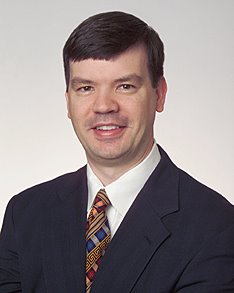Up until about 30 years ago there really was no such thing as breast reconstruction. Flap-based reconstruction was just being conceptualized by pioneers John McGraw, Luis Vasconez , Carl Hartrampf, & John Bostwick. Tissue expander technology was in its infantcy. Microsurgical techniques were primitive. Surgeons trained up until that point had no experience in this area.
In the blink of an eye came Bostwick's Latissimus flap/implant procedure, Carl Hartrampf's TRAM (transverse rectus abdominus myocutaneous) flap, and Radavan's tissue expander reconstruction. Unsatisfactory results from early expander + implant reconstructions led to wide-spread popularity of the TRAM flap. As microsurgery matured "free flaps" (the blood supply to the muscle/skin island is isolated,dived, & sewed back in where the tissue is required) were designed and flourished at many training programs and tertiary hospitals.
Recently, a new reportedly less-morbid variant of the free-TRAM has been advocated by New Orleans surgeon, Bob Allen called the DIEP flap. This procedure involves tracing the small perforating vessels thru the rectus muscle & leaving the rectus muscle behind. Proponents argue that this is the most elegant & least morbid autologous reconstruction available. A number of DIEP-performing plastic surgeons have gone so far as to label the traditional pedicled TRAM obsolete.
What's a patient to do when presented with these complex choices?
I think what's telling is that when a panel of female plastic surgeons recently at the Annual Plastic Surgery Society meeting, the majority of them would NOT select TRAMS for their own reconstruction as first-line reconstruction (expanders were most preferred)and a number of free TRAM/DIEP performing surgeons in the audience expressed doubts over the cosmetic superiority of free flaps over the pedicled TRAM or Latissimus+implant reconstructions.
Tuesday, January 17, 2006
Subscribe to:
Post Comments (Atom)






7 comments:
I had the pleasure of observing Dr. Allen do an S-IGAP breast recon on a cadaver at my training program. He is a true gentleman, and a wonderful teacher. I think that his procedures will continue to gain in popularity as the results are good, and the operations seem to be technically less demanding than free flaps.
The DIEP & SGAP flaps are free flaps and in fact are much,much more technically demanding then pedicled or free-TRAMS. This is going to limit the popularity of them outside some tertiary centers & teaching hospitals.
Dr. Allen is also in somewhat of a unique position, being one of 2-3 surgeons nationally who can command $20,000+ out of the patient's pocket up front to perform this procedure. In the real world, the reimbursements have made it difficult to justify the time & resources for some of these elective exotic reconstructive procedures.
If you are well trained and can perform expedient auotologous tissue reconstruction you can obtain great results and still make it cost efficient. All this talk of superiority of implants is hogwash! A good team can complete a TRAm, even a free TRAM in less than 3 hours. Many surgeons perform bilatreral expander ecosntructions in 2-3 hours. Don't forget the expanders and implants cost the hospital $1200 per expander and 800 -100 for implant (saline, gels are more). With the minimal reimbursements hospitals get for second stage implant reconstructions, they do not want to have these cases as the implants offset reimbursements.
there is truth to that. I reconstruct using all methods and neither one generates good revenue for the hospitals. They all want orthopedic and ENT cases that generate 2-4 times more than reconstructive procedures. They sure do not want aesthetics either!
I think most surgeons would have difficulty performing a pedicled TRAM, much less a free TRAM in under 3 hours start to finish. There are some centers that claim that is feasible (I think Franklin Elliot from Atlanta likes to say that with free TRAMS), but I will go on a limb and say that is not widely reproducible especially if you're operating by yourself sans help from a co-surgeon, resident, or nurse that sews.
I think the market has spoken on this in large part as witnessed by the relative paucity of surgeons who will do a TRAM at all. If it still reimbursed at the level of the late 1980's I think everyone would be doing it.
Making a TRAM cost-efficient (for the Doctor) usually requires being subsidized on some level. If you don't have help that's being paid for by the feds (a resident)or the hospital (a nurse or PA that can sew), I think most people have recognized that there is a point of diminshing returns.
3 hour free TRAMS or DEIPS is not a realistic time frame for 99% of Surgeons I would suggest.
Dr. John McGraw did the Latissimas flap surgery on me in 1980 on one breast only due to Polands Syndrome ,I was the youngest in the US to have the new procedure done and it was very successful.I get positive comments on the natural look of the breast from medical professionals all the time.
Post a Comment